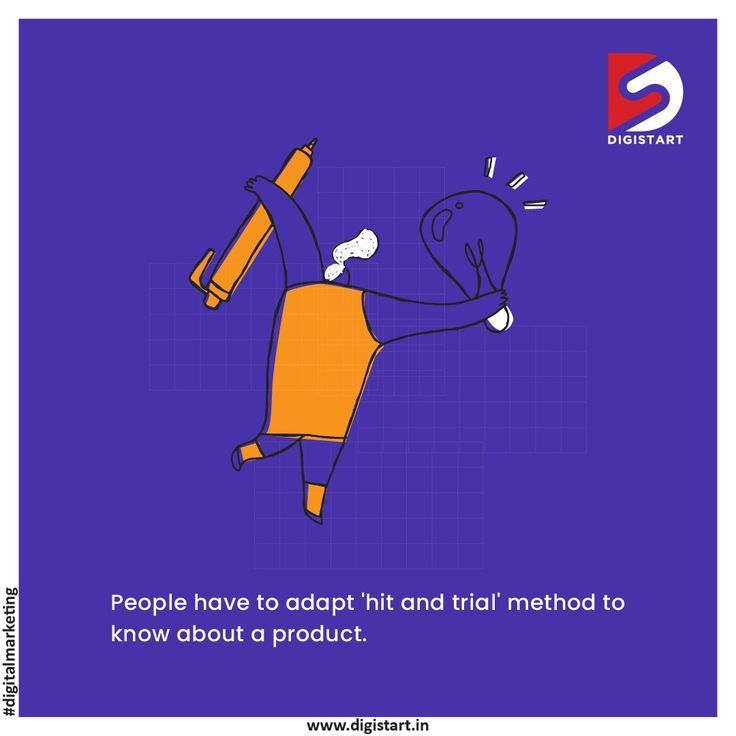Arts, A/V Technology, and Communication Cluster: Career Pathways and Opportunities
Understand the arts, a / v technology, and communication cluster
The arts, audio / visual technology, and communication career cluster encompass a diverse range of creative and technical disciplines that focus on create, produce, exhibit, perform, writing, and publish multimedia content. This career cluster serves as a foundation for students interested in express creativity while apply technical skills across various media platforms.
At its core, this cluster prepares individuals for careers where they can communicate ideas, information, and entertainment through different mediums. The cluster represent the intersection of artistic expression and technological innovation, make it peculiarly relevant in our digital age.
Key pathways within the cluster
The arts, a / v technology, and communication cluster typically include several distinct career pathways that students can explore:
1. Audio and video technology and film
This pathway focus on the production and manipulation of audio and video content. Professionals in this field work behind the scenes to create movies, television shows, music recordings, and digital media. They operate sophisticated equipment and software to capture, edit, and produce high quality content.
Career opportunities include:
- Film and video editors
- Camera operators
- Sound engineers
- Broadcast technicians
- Production assistants
2. Journalism and broadcasting
This pathway center on gathering, analyze, and distribute news and information across various media platforms. Professionals in this field serve as the bridge between events and audiences, ensure accurate and timely reporting.
Career opportunities include:
- Reporters and correspondents
- Broadcast news analysts
- Editors
- News directors
- Photojournalists
3. Perform arts
The perform arts pathway prepare students for careers in dance, music, theater, and other performance base artistic expressions. This pathway emphasizes both the creative and technical aspects of live performance.
Career opportunities include:
- Actors and actresses
- Musicians and singers
- Dancers and choreographers
- Directors and producers
- Stage managers and technicians
4. Printing technology
This pathway focus on the creation and reproduction of print materials. Despite the digital revolution, printing remain essential for many communication forms, from books to packaging.
Career opportunities include:
- Print press operators
- Prepress technicians
- Bind and finishing workers
- Digital print specialists
- Print production managers
5. Visual arts
The visual arts pathway encompasses the creation of two anthree-dimensionalal art forms. Thiincludesde traditional fine arts axerophthol fountainhead as commercial and digital art applications.
Career opportunities include:
- Graphic designers
- Illustrators
- Photographers
- Multimedia artists and animators
- Art directors
6. Telecommunications
This pathway focus on the transmission of information through various technological means. It combines technical knowledge with communication skills.
Career opportunities include:
- Telecommunications equipment installers
- Network specialists
- Telecommunications line installers
- Communications analysts
- Satellite communications technicians
Essential skills develop in the cluster
Students who pursue education and training in the arts, a / v technology, and communication cluster develop a valuable mix of creative, technical, and soft skills that are extremely transferable across industries:
Creative skills
-
Artistic expression:
The ability to communicate ideas through visual, audio, or performance base mediums -
Design thinking:
A problem solve approach that balance aesthetics with functionality -
Storytelling:
Craft compelling narratives that engage audiences -
Originality:
Generate novel ideas and approaches to creative challenges
Technical skills
-
Digital media production:
Proficiency with industry standard software and equipment -
Technical operation:
Manage complex audio / visual systems and equipment -
Programming:
Basic code knowledge for interactive media applications -
Equipment maintenance:
Troubleshoot and maintain specialized technology
Communication skills
-
Write communication:
Craft clear and effective write content -
Verbal communication:
Articulate ideas persuasively -
Visual communication:
Convey messages through images and design -
Active listening:
Understand audience need and feedback
Professional skills
-
Project management:
Coordinate complex creative projects from concept to completion -
Collaboration:
Work efficaciously in creative teams -
Time management:
Meeting deadlines in fasting pace production environments -
Adaptability:
Respond to change technologies and audience preferences
Educational pathways
The arts, a / v technology, and communication cluster offer multiple educational pathways depend on career goals:
Secondary education
Many high schools offer career and technical education (cCTE)programs align with this cluster. These programs provide foundational knowledge and skills through specialized courses, such as:
- Introduction to multimedia
- Digital photography
- Video production
- Graphic design
- Journalism
- Theater arts
These programs oft include opportunities for hands on learn through school publications, broadcast programs, theater productions, and community partnerships.
Postsecondary options
After high school, students can pursue various educational paths:
-
Certificate programs:
Short term, focus training in specific technical skills -
Associate degrees:
Two year programs that balance technical training with general education -
Bachelor’s degrees:
Four year programs offer comprehensive education in specialized fields -
Graduate degrees:
Advanced study for leadership positions or specialize creative roles
Many institutions offer programs specifically design for this cluster, such as film schools, art institutes, conservatories, and communications programs within traditional colleges and universities.
Industry certifications
Professional certifications can enhance employability and demonstrate specialized knowledge. Relevant certifications include:
- Adobe certified professional
- Apple certified pro
- Avid certified user
- Society of broadcast engineers certifications
- Printed certification
Industry trends shape the cluster
The arts, a / v technology, and communication cluster is continually evolve due to technological advancements and change consumer behaviors. Current trends include:
Digital transformation
The shift from analog to digital has revolutionized all aspects of this cluster. From digital cinematography to online publishing, professionals must adapt to new tools and platforms. This transformation hasdemocratizede content creation while raise the technical bar for professional quality work.
Immersive technologies
Virtual reality (vVR) augmented reality ( ( AR)nd mixed reality are creacreated storytelling possibilities. These technologies are tratransformedtertainment, journalism, and marketing by offer more immersive experiences for audiences.
Content streaming
The rise of streaming platforms has change how audio and video content is distributed and consume. This shift hascreatede new opportunities for content creators while disrupt traditional broadcasting and distribution models.
Remote collaboration
Advanced communication technologies enable creative teams to collaborate across geographic boundaries. Cloud base production tools, video conferencing, and collaborative software have make remote work progressively common in creative industries.
Audience engagement
Interactive media and social platforms have transformed the relationship between creators and audiences. Today’s communication professionals must understand how to foster engagement and build communities around their content.

Source: hallco.org
Career outlook and opportunities
The job outlook for careers in this cluster vary by specific pathway and role. Some key factors affect employment include:
Growth areas
Several sectors within this cluster are experience growth:
-
Digital content creation:
Increase demand for online video, podcasts, and interactive media -
User experience design:
Grow need for professionals who can create intuitive digital interfaces -
Social media management:
Expand opportunities in digital marketing and community management -
Virtual production:
Emerge field combine filmmaker with real time game engine technology
Entrepreneurial opportunities
The digital revolution has created unprecedented opportunities for creative entrepreneurs. With comparatively low barriers to entry, individuals can launch:
- Independent media production companies
- Freelance creative services
- Digital content platform
- Specialized communication agencies
Transferable skills
The skills develop in this cluster are extremely transferable to other industries. Creative problem solve, technical adaptability, and communication expertise are value across sectors, include:
- Marketing and advertising
- Education and training
- Healthcare communications
- Corporate communications
- User experience design
Benefits of the arts, a / v technology, and communication cluster
This career cluster offer several distinct advantages for students:
Creative expression
For students with artistic inclinations, this cluster provides structured pathways to turn creative passions into sustainable careers. Itvalidatese creative expression as a legitimate and valuable professional pursuit.
Technical relevance
The technical skills develop in this cluster are direct applicable to current industry needs. Students gain experience with professional grade equipment and software use in the field.
Portfolio development
Unlike many career areas that rely principally on credentials, this cluster emphasizes the creation of tangible work samples. Students graduate with portfolios demonstrate their capabilities to potential employers.
Industry connections
Many programs in this cluster feature strong connections to industry through internships, guest speakers, and collaborative projects. These relationships facilitate networking and job placement.
Personal fulfillment
Careers in this cluster oftentimes offer high levels of personal satisfaction through creative expression, storytelling, and connect with audiences. The opportunity to see one’s creative vision realize provide intrinsic motivation.
Challenges and considerations
While offer many benefits, the arts, a / v technology, and communication cluster besides present certain challenges:
Competitive environment
Many fields within this cluster are extremely competitive, especially in entertainment and media. Success frequently require persistence, networking, and continuous skill development beyond formal education.

Source: classful.com
Technological change
The rapid pace of technological innovation require professionals to continually update their skills. Lifelong learning is essential to remain relevant in these fields.
Economic fluctuations
Some sectors within this cluster are sensitive to economic conditions, with marketing, advertising, and entertainment budgets oftentimes reduce during downturns. Build versatile skills can help weather these fluctuations.
Work-life balance
Certain careers in this cluster, such as film production or live events, may involve irregular hours and intense project base work. Understand these demands is important when choose a specific pathway.
Conclusion
The arts, a / v technology, and communication cluster represent the intersection of creativity, technology, and human connection. It prepares students for careers that harness artistic expression and technical skills to communicate ideas efficaciously across various media platforms.
This cluster wellspring describe a comprehensive approach to career preparation that balance creative development with practical skills. It acknowledges both the artistic and technical dimensions of communication while prepare students for the realities of the modern media landscape.
For students with interests in creative expression, storytelling, and technology, this cluster offer structured pathways to translate those passions into meaningful careers. As communication continue to evolve in our digital age, the skills develop in this cluster remain essential across industries and provide a foundation for lifelong learning and adaptation.



